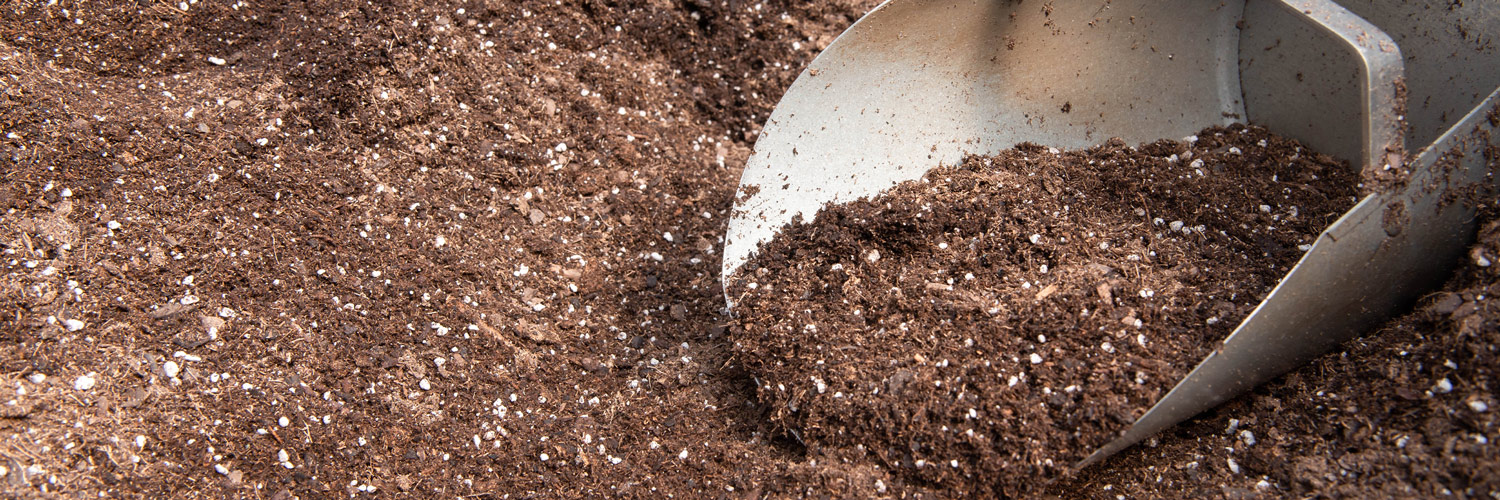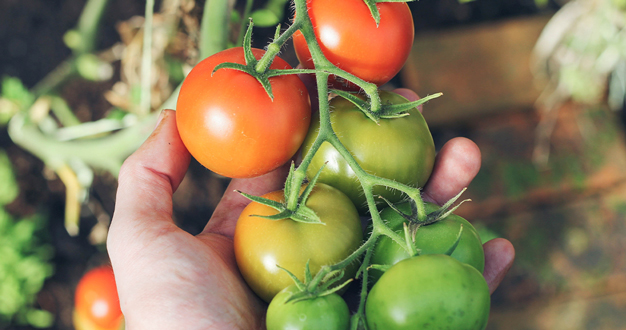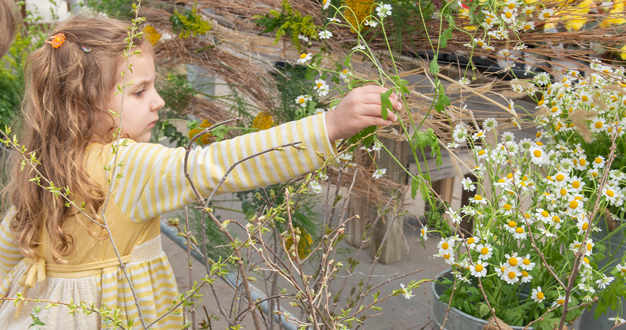
When it comes to container gardening, it all starts with the right potting mix – one that can keep your plants happy and beautiful all through the growing season. But not all potting mixes are equal, and you might even wonder why we can’t just use soil from the garden. Here we explain the science behind that question, as well as how the ingredients in potting mixes – and their quality – make the world of difference between a struggling plant and a healthy, thriving plant. It’s all to say just why we’re so passionate about our favorite potting mix – the one we use and recommend every day.
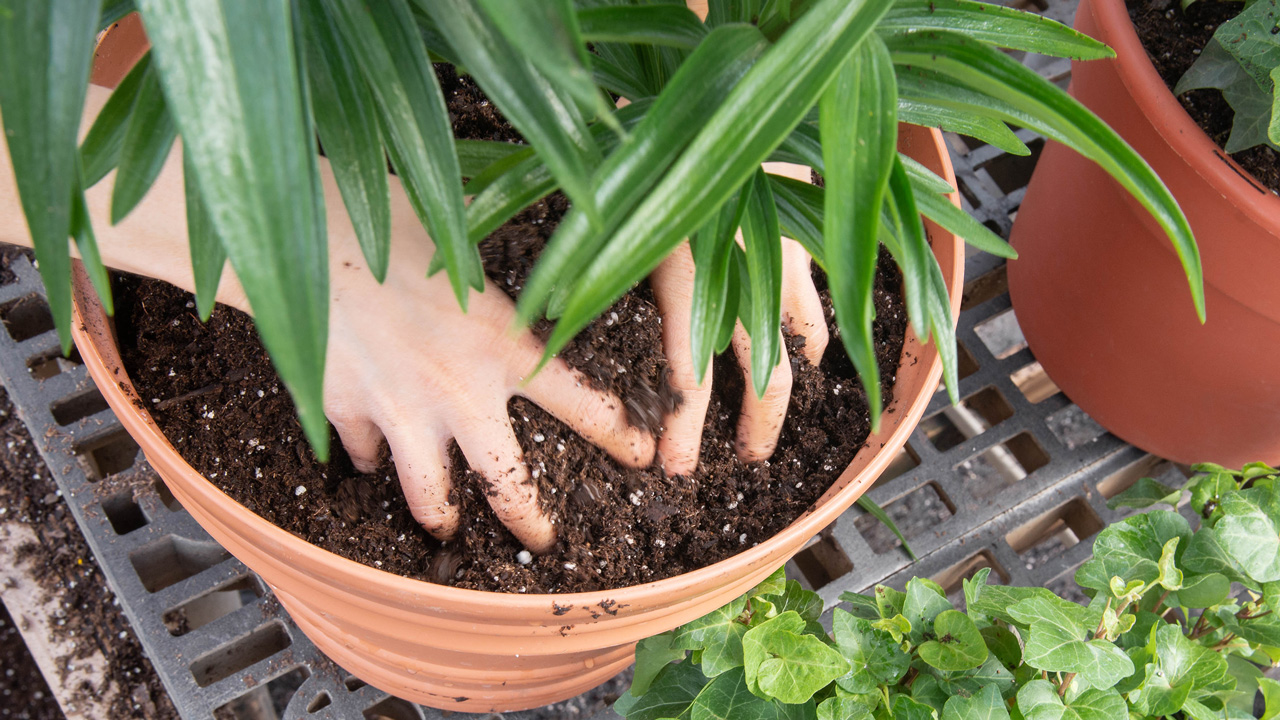
The Challenges of Container Life
Why do we have special potting mixes for container gardens and potted plants? After all, plants grow perfectly well in healthy, well-amended garden beds – why not use the same soil in our planters too? If you look at things from a plant’s perspective, container life is more challenging than life in the ground because, even if you use the most well-amended garden soil, good drainage is limited in a container.
To learn more about the science of drainage in containers, we spoke with Paul Karlovich, technical specialist from Sun Gro® Horticulture. As Paul explains, in garden beds, gravity acts on the soil from deep underground, allowing excess water to drain down and away from plants’ roots. But in a container, the force of gravity can only pull water to the bottom of the container, where it may or may not find a drain hole to escape.
At the same time, water is also drawn upward and is held in the soil by capillary action – the same force that pulls water slightly up a straw as it sits in a cup of water. And the skinnier the straw, the higher the water is pulled. Similarly, water gets pulled upward into the pores of soil – particularly in the tiny pores of our clay-heavy soils – where it’s held. So even with a good drain hole, some of the water just won’t be able to escape in a container filled with garden soil. And too much water in the soil for too long can cut off air circulation around the roots, which can stress or even kill a plant.
What’s needed is something that provides support and nutrition for plants, but has exceptional drainage properties as well. And in the 1960’s, horticulturists from Cornell University found the answer – peat-based potting mix.
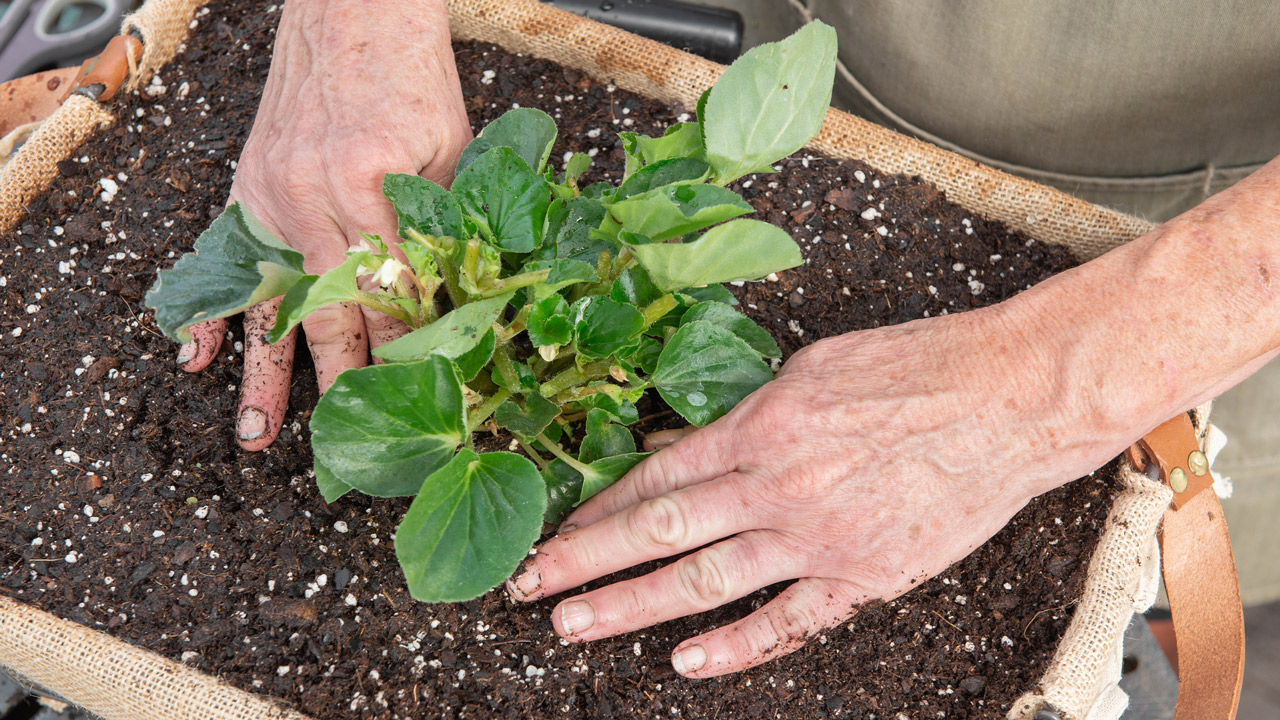
Better Than Soil
Like soil, potting mix provides stability and nutrition for plants, but it isn’t really a soil at all. It’s a growth medium formulated specifically to help plants live happily in pots. Instead of soil, professional potting mixes contain a combination of sphagnum peat, aged or composted bark, perlite, and vermiculite – and sometimes a few other components, depending on the mix. Thanks to these ingredients, a good potting mix holds just the right amount of moisture while letting the excess drain away easily. It also maintains an airy, “fluffy” structure whether wet or dry. Potting mix just makes container life a lot easier for plants.
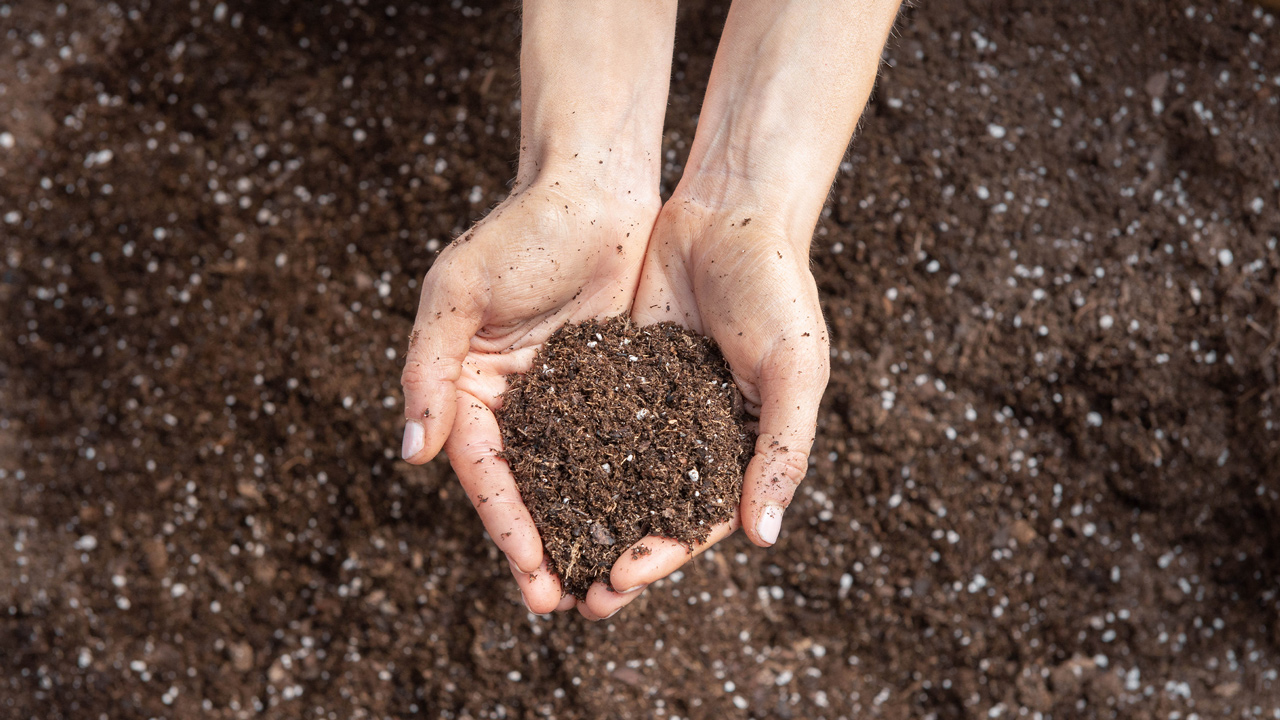
Sphagnum Peat
In all-purpose soil-less mixes, sphagnum peat is the single-most important ingredient – it even makes up well over half of the volume in a good mix. But the type and quality of peat differs a lot from one potting mix to another – not something that’s easy to tell from the list of ingredients on the bag.
Sphagnum peat is created when the sphagnum moss living in bogs dies and eventually decays, building up layer after layer over time – a bit like a layer cake if you could see it from the side. As Paul explains, Sun Gro® collects peat from the bogs and assigns grades to the layers using a scale of H1 to H10, based on color and particle size. Peat from deep in the bog – grades H7 to H10 – is the oldest. It’s dark in color, highly decomposed, and finely textured. Younger peat from layers near the surface – grades H1 to H3 – is less decomposed, so it’s lighter in color and more fibrous.
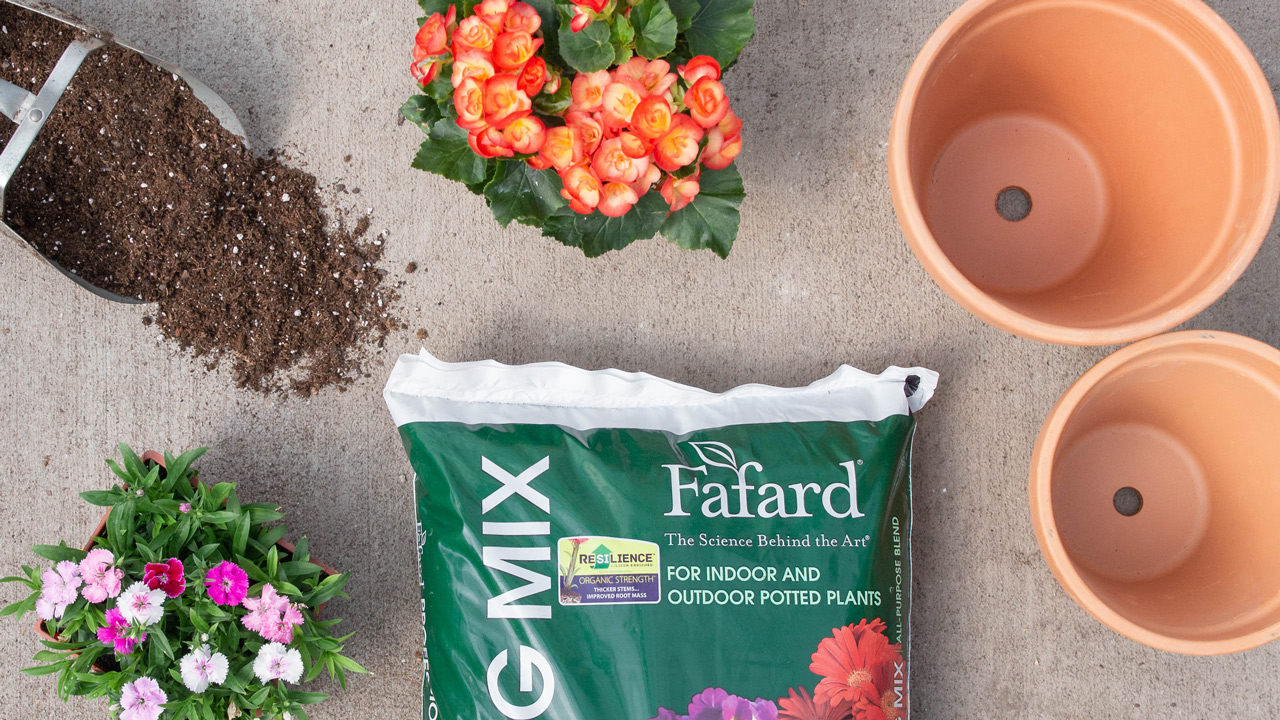
Why We Love Fafard®
So what is our favorite potting mix? If you ask our team members what we use for our own container gardens at home, most often we’ll point you right to Fafard® Professional Potting Mix. And that has a lot to do with the quality of peat that Sun Gro® uses to create it.
Paul tells us that for Fafard®, they use only high-quality grades of peat from high in the bog profile. This younger, coarser peat does the best job of encouraging drainage for container plants and retaining a light, fluffy texture the roots can thrive in whether the mix is wet or dry. And as North America’s largest supplier of sphagnum peat, Sun Gro® has access to more peat bogs than any other harvesting company. This allows them to maintain a consistently high-quality product, even if a rainy season shuts down harvesting in one area or another. Fafard®’s mix of high-quality peat, aged bark, and perlite offers the perfect combination of water retention, drainage ability, and aeration.
Another thing we love about Fafard® is what it doesn’t have in it. Fafard® Professional Potting Mix doesn’t contain added fertilizers, water-retention crystals, or other extras that a plant may not need or could even be harmed by – in the case of some fertilizer- or moisture-sensitive plants. But if you want to add these extras yourself, Fafard® is a perfect base for any specialized blend you want to create.
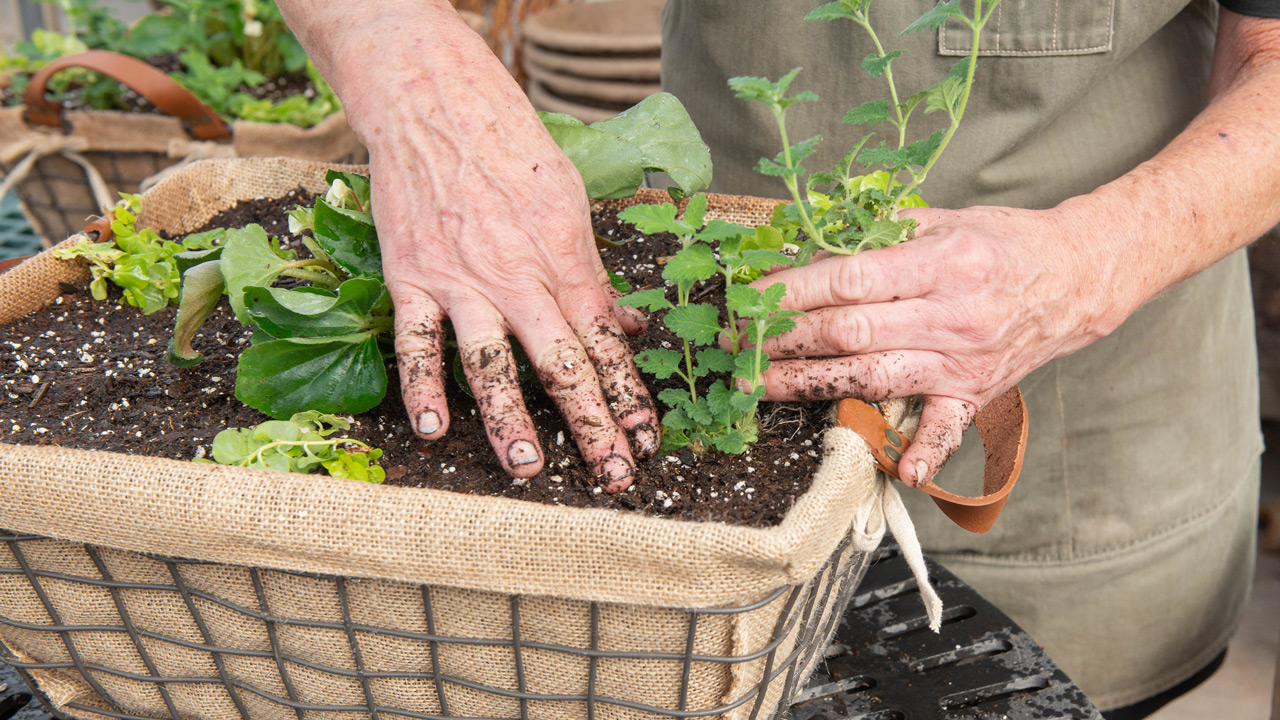
Plant with Confidence
Fafard® Professional Potting Mix is our favorite mix for all kinds of plants – tropical houseplants, annuals, vegetables, and herbs too – but we have several specialized potting mixes too. Whether you pot up geraniums, petunias, tomatoes, hibiscus, or cacti, stop by and talk with our Plant Care team. We’re more than happy to point you to a mix that’s perfect for you and your plants.

